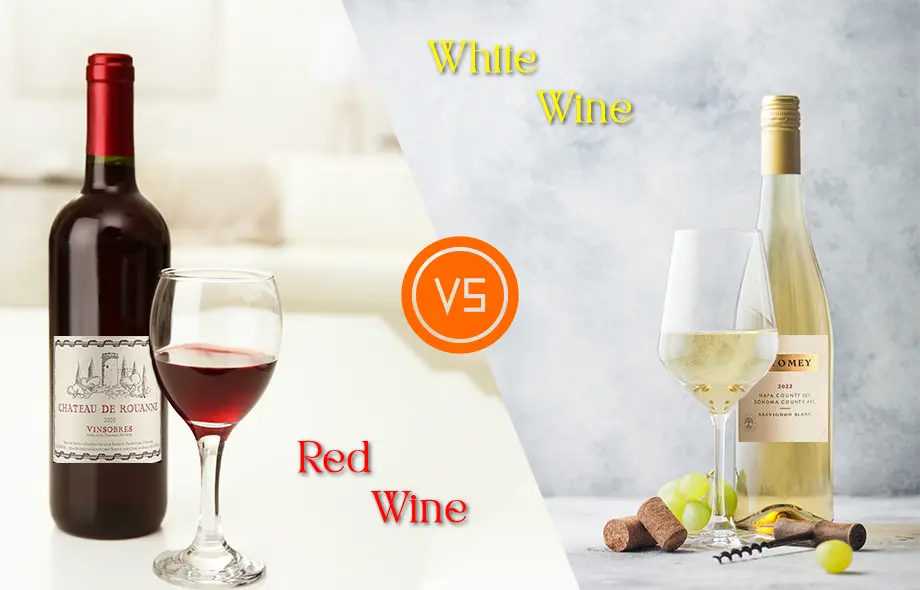The eternal question that has puzzled wine enthusiasts and newcomers alike: should you reach for that bottle of Cabernet Sauvignon or the crisp Sauvignon Blanc? Understanding the fundamental differences between red wine vs white wine isn’t just about color—it’s about discovering your personal taste preferences and mastering the art of selection.
The Production Process: Where the Magic Begins
The journey of how wine is made reveals the first crucial difference between red and white wines. Red wines derive their rich color and bold flavors from extended contact with grape skins during fermentation. This process, called maceration, can last anywhere from a few days to several weeks, extracting tannins, color compounds, and complex flavors.
White wines, conversely, are typically produced by separating the grape juice from the skins immediately after pressing. This gentle approach preserves the wine’s light color and creates those bright, fresh flavors that make white wines so refreshing. Some white wines, like Chardonnay, may undergo additional processes like oak aging or malolactic fermentation, adding layers of complexity
Exploring Types of Red Wine
The world of types of red wine offers incredible diversity. Light-bodied reds like Pinot Noir provide
delicate fruit flavors with subtle earthiness, making them excellent choices for those transitioning from
white wines. Medium-bodied options such as Merlot and Sangiovese offer more structure while
remaining approachable. Full-bodied powerhouses like Cabernet Sauvignon and Syrah deliver bold,
intense flavors that pair beautifully with hearty dishes.
For newcomers exploring the best wine for beginners, consider starting with a Merlot or a Côtes duRhône blend. These wines offer complexity without overwhelming tannins, providing an excellent introduction to red wine appreciation.
White Wine Characteristics and Varieties
White wines showcase their own spectacular range of styles. Crisp, mineral-driven wines like Albariño and Muscadet offer clean, refreshing experiences perfect for summer days. Aromatic varieties such as Riesling and Gewürztraminer provide floral and fruit-forward profiles, while rich, oak-aged Chardonnays deliver buttery, vanilla-tinged complexity.
Mastering Wine and Food Pairing
Understanding wine and food pairing transforms both your dining and drinking experience. Red wines generally complement richer, more robust dishes. The tannins in red wine create a beautiful contrast with fatty meats, while the wine’s acidity cuts through rich sauces. Try Cabernet Sauvignon with grilled steak, or Pinot Noir with roasted chicken or salmon.
White wines excel with lighter fare, seafood, and dishes featuring cream or butter-based sauces. The bright acidity in whites enhances the flavors of fish and shellfish, while fuller-bodied white wines can stand up to poultry and pork dishes. Sauvignon Blanc pairs wonderfully with goat cheese and fresh herbs, while Chardonnay complements lobster and creamy pasta dishes.
Budget-Friendly Options for Every Palate
Discovering best affordable wines doesn’t require sacrificing quality. Many excellent red wines from regions like Spain’s Jumilla, France’s Languedoc, or Portugal’s Douro offer exceptional value. For whites, consider exploring wines from Germany’s Mosel region, Portugal’s Vinho Verde, or France’s Loire Valley.
Pro Tip
Don’t be afraid to ask your local wine shop for recommendations within your budget. Many hidden gems exist in the $1020 range that rival wines costing twice as much.
Making Your Choice
Ultimately, the choice between red and white wine comes down to personal preference, the occasion, and what you’re eating. Consider the season—whites often feel more appropriate in summer, while reds provide comfort during cooler months. Think about your meal: will you be enjoying delicate fish or a hearty beef stew?
Ready to explore the world of wine? Start by visiting your local wine shop and asking for recommendations based on your taste preferences. Don’t be afraid to try something new—every wine tells a story, and discovering your favorites is half the fun of this incredible journey.
 :
https://in.pinterest.com/vinora_official/
:
https://in.pinterest.com/vinora_official/


